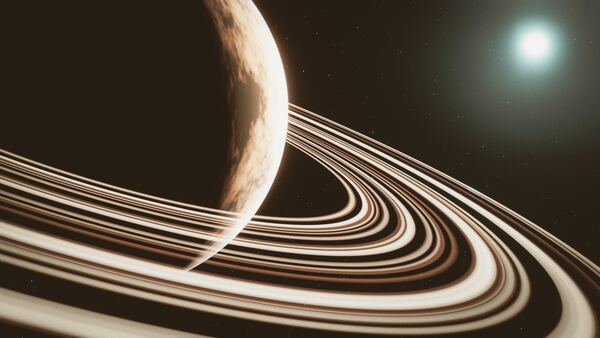This article considers The role of robotics in terraforming and space exploration. We explore this topic as part of our series exploring the role of terraforming in space colonization.
What Is The Role Of Robotics In Terraforming?
Robotics can play an important role in the process of terraforming by performing tasks that are too dangerous or difficult for humans, as well as increasing efficiency and reducing costs.

Robotics can play a critical role in the process of terraforming by performing tasks that would be difficult, dangerous, or impossible for humans to accomplish on their own.
By working in tandem with human explorers and engineers, robots can help make terraforming more efficient, cost-effective, and sustainable.
Here are some examples of the role of robotics in terraforming:
Exploration:
Robots can be sent ahead of human explorers to survey the terrain and gather data on the planet’s geology, atmosphere, and other conditions. This information can help inform the terraforming process and guide the placement of habitats and infrastructure.
Construction:
Robots can be used to build structures and infrastructure, such as habitats, greenhouses, and power stations. They can also excavate and move soil, rocks, and other materials to create the necessary terrain features for the planet.
Maintenance:
Robots can perform routine maintenance tasks, such as repairing equipment and monitoring infrastructure for damage. This can help reduce the need for human maintenance crews, which can be expensive and difficult to sustain in a remote environment.
Resource extraction:
Robots can be used to mine minerals, extract water, and harvest other resources needed for terraforming. This can reduce the need for human miners, who would be exposed to hazardous conditions and require life support systems.
Environmental monitoring:
Robots can be equipped with sensors to monitor the planet’s environment, such as air and water quality, temperature, and radiation levels. This data can be used to track the progress of terraforming and identify any potential environmental hazards.
What Is Meant By Space Robotics?
Space robotics refers to the development, design, and use of robots in space exploration and other space-related activities.

Space robotics involves creating robots that are able to function in the harsh and demanding conditions of space, such as extreme temperatures, radiation, and vacuum environments.
Space robotics is an important field that is helping to advance our understanding of the universe and our ability to explore and utilize space resources.
Space robotics has many applications, including:
Space exploration:
Robots can be sent to explore other planets, asteroids, and moons, collecting data and conducting experiments that would be too dangerous or difficult for humans to perform.
Maintenance and repair:
Robots can be used to inspect and repair spacecraft and other space infrastructure, extending their useful lifespan and reducing the need for human maintenance crews.
Satellite servicing:
Robots can be used to refuel and repair satellites, which can help reduce the cost and environmental impact of launching new satellites.
Space manufacturing:
Robots can be used to manufacture and assemble components in space, reducing the cost and complexity of launching large structures from Earth.
Space mining:
Robots can be used to mine resources from asteroids and other celestial bodies, which can be used for fuel and other purposes.
What Terraforming Ideas Include Robotics?
Robotics can play a critical role in the terraforming process by performing tasks that would be too difficult or dangerous for humans to perform, and by increasing efficiency and reducing costs.
By working together with human explorers and engineers, robots can help make terraforming a more viable and sustainable process.
There are several terraforming ideas that include robotics as a critical component. Here are some examples:
Seeding and fertilizing:
In order to transform a barren planet into a habitable one, vegetation and other organic matter must be introduced. Robots can be used to plant seeds and fertilize soil, reducing the need for human labor.
Atmosphere processing:
Many terraforming proposals involve altering the planet’s atmosphere by releasing gases such as oxygen and carbon dioxide. Robots can be used to extract and process these gases, as well as monitor the changes in atmospheric composition over time.
Water management:
Water is a critical resource for terraforming, and robots can be used to extract water from ice caps and other sources, as well as monitor water levels and quality.
Climate control:
Terraforming proposals often involve controlling the planet’s climate to create habitable conditions. Robots can be used to regulate temperature, humidity, and other factors that affect the climate.
Habitat construction:
Robots can be used to construct habitats and other infrastructure needed for human settlers, reducing the need for human construction crews and minimizing the risk of accidents.
How Robotics Are Being Used In Space Exploration
Robotics are playing a critical role in space exploration by performing tasks that are too dangerous or difficult for humans to perform, as well as increasing efficiency and reducing costs.
As technology advances, it’s likely that robotics will continue to play an increasingly important role in space exploration and colonization.
Robotics are playing an increasingly important role in space exploration. Here are some ways in which robotics are currently being used:
Planetary exploration:
Robotic rovers, such as the Mars rovers Curiosity and Perseverance, are used to explore the surface of other planets. These rovers are equipped with a variety of sensors and instruments to collect data on the planet’s geology, atmosphere, and other conditions.
Satellite servicing:
Robotic arms are used to repair and refuel satellites in orbit, extending their lifespan and reducing the need for costly and risky manned missions.
Cargo transport:
Robotic spacecraft, such as the SpaceX Dragon and Northrop Grumman Cygnus, are used to transport supplies and equipment to the International Space Station and other orbiting outposts.
Spacecraft assembly:
Robotic arms are used to assemble and deploy spacecraft in orbit, reducing the need for human spacewalks and minimizing the risk of accidents.
Asteroid mining:
Robotic spacecraft are being developed to mine resources from asteroids, which can be used for fuel and other purposes.
What is the role of AI in space exploration?
Artificial Intelligence (AI) is playing an increasingly important role in space exploration by enabling autonomous decision-making, improving data analysis, optimizing mission planning, and improving the performance of robotic systems.
As AI technology continues to advance, it’s likely that its role in space exploration will continue to expand.
Here are some ways in which AI is being used:
Autonomous decision-making:
AI algorithms are used to make decisions in real-time based on data collected by spacecraft and rovers. This allows them to respond to unexpected events, such as equipment malfunctions or changing environmental conditions, without human intervention.
Data analysis:
AI is used to analyze large amounts of data collected by spacecraft and other instruments, identifying patterns and anomalies that might be missed by humans.
Mission planning:
AI algorithms are used to optimize mission planning, taking into account factors such as fuel consumption, spacecraft trajectory, and environmental conditions.
Robotics control:
AI is used to control robotic systems, such as rovers and robotic arms, allowing them to operate autonomously and perform complex tasks.
Resource management:
AI algorithms are used to manage resources such as power, fuel, and water, ensuring that they are used efficiently and effectively.
‘The role of robotics in terraforming and space exploration’ is one important topic in our series exploring the role of terraforming in space colonization.
Read more about these topics by following the links below:
Republished by Blog Post Promoter
